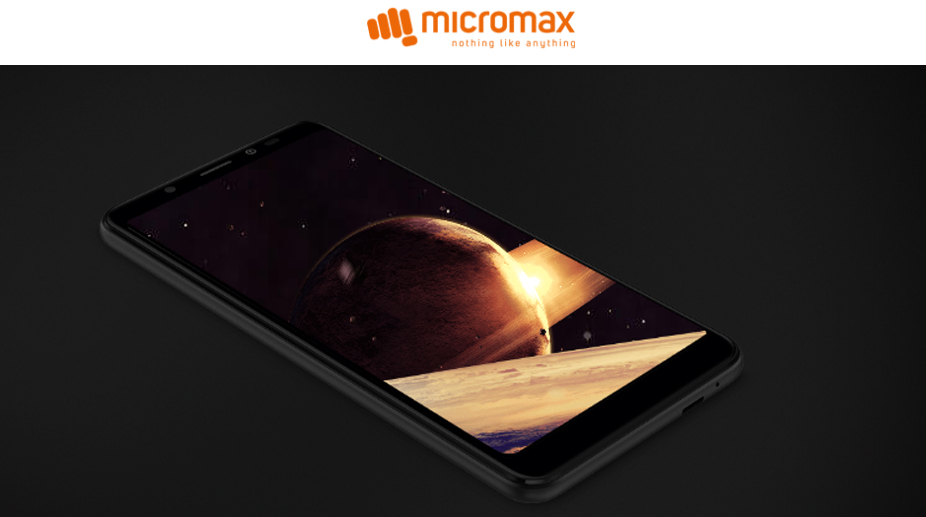Who Is Rahul Sharma, Husband of Actress Asin and Micromax Co-founder?
Discover Rahul Sharma, the co-founder of Micromax and husband of actress Asin Thottumkal. Learn more about his life, achievements, and entrepreneurial journey.

Homegrown handset manufacturer Micromax has become the first company to launch a bezel-less smartphone at Rs 9,999 with a display aspect ratio of 18:9, instead of the usual 16:9.
Bezel-less smartphones have begun gaining popularity but the ones that are offered belong to the premium segment such as Samsung Galaxy S8 and S8+, LG G6 and the recently-launched Galaxy Note 8.
Advertisement
Is the Canvas Infinity worth your time and money? Let us find out.
Advertisement
Micromax has used minimal bezels to accommodate a 5.7-inch HD IPS display topped with 2.5D curved glass in a frame that is slightly taller than wider.
The screen has been stretched from all sides to give more screen space to the user. This is a good over 80 per cent screen-to-body ratio, similar to what Galaxy S8 offers.
That being said, a first glance at the front of the Canvas Infinity is sure to remind you of the Samsung Galaxy S8.
The metal frame around the phone makes it quite sturdy.
Users with small hands would feel comfortable using the device. In fact, the phone is ergonomic enough for single-handed use.
The rear side houses a single-lens primary camera with 13MP sensor, 81.5-degree field of view, 5P lens and LED flash and an aperture of f/2.0.
Another highlight of Canvas Infinity is 16-MP front camera that comes with soft “selfie” flash and an aperture of f/2.0.
The company says that the device sports “Super Pixel” that can shoot multiple images at the same time and combine them to give you a higher-resolution image with more details.
The camera interface is pretty simple and offers options such as time-lapse, panorama, video, beauty, and portrait mode.
The imaging capability of the primary camera is decent with good colour reproduction. We think the front camera does a better job at clicking images with sharp details.
At a time when unibody smartphones are a rage, the company has opted for a removable plastic back with metal finish for Canvas Infinity.
Similar to the Moto G5, Canvas Infinity’s back can be removed to reveal two SIM card slots and a dedicated microSD card slot to expand memory up to 128GB.
“Smart Action” is a handy feature that lets the user call a contact by placing the phone close to the ear, wake and lock screen by double tap, flip the phone to mute or snooze alarm and more.
The phone supports smart gestures such as draw O to open the camera, M to launch music app and C for the phone.
Users can also also choose from handy options such as Android Nougat’s split-screen feature.
“Canvas Infinity” is powered by a Snapdragon 425 chipset which is capable of handling day-to-day tasks.
There was no noticeable lag while browsing videos or running multiple applications during our review.
Canvas Infinity runs Android 7.1.2 Nougat OS that would update to the just-launched Android 8 Oreo OS, the company said during the launch.
The customised UI looks like it has been “borrowed” from iOS. The phone’s recent apps have a card-based view which is quite like what we see on the iPhone.
What does not work?
The primary camera struggled while taking images in low light conditions. The photographs taken at night had noticeable noise.
The battery lasted less than a day when we used it rigorously to play videos, play games and browse the internet.
The 5.7-inch display loses some of its sharpness due to 720p HD only resolution.
Conclusion.
It would be unfair to compare Canvas Infinity to Samsung Galaxy S8 and S8+ phones because the former falls in the Rs 10,000 segment and the company’s strength has been catering to the masses.
In fact, LG Q6 with 18:9 aspect ratio is the real competitor albeit, it costs almost Rs 5,000 more.
The company has taken a step towards innovating and it is not something that we have seen the Chinese handset makers do.
Advertisement